1. Smoke Belching Meaning: Introduction
If you have seen a jeepney on the road, chances are you have seen black smoke coming out of its exhaust pipe. The black smoke you see coming from a vehicle is called smoke belching. It is a forceful expulsion of thick smoke from an exhaust system. Smoke belching is quite common to see in Metro Manila especially from public utility vehicles that are used as public transport.
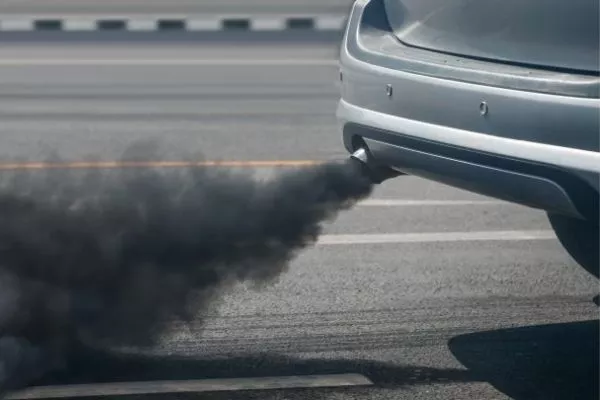
A pretty common sight to see on the road
You may ask, “is smoke belching in the Philippines legal?” Well, obviously and there are factors to consider in order to claim that a certain vehicle is a smoke belcher.
Smoke belching in the Philippines is actually highly monitored by the Metropolitan Manila Development Authority (MMDA). There are penalties imposed if your car happens to emit this kind of smoke.
2. Smoke Belching: What are the possible causes?
Before getting into the regulations and penalties, let’s first take a look at what are the possible causes of smoke belching.
Smoke belching is actually caused by several reasons. However, we can all agree that the main cause of this is due to incompletely burnt fuel or too much fuel sprayed on an engine. In other words, smoke belching is caused by an imbalance in the air to fuel ratio.
One of the easiest components to look for when your car is emitting black smoke is its air filter. Your car’s air filter could be clogged that causes your car engine to take less air. Less air also means more fuel, hence an imbalance in the air to fuel ratio.
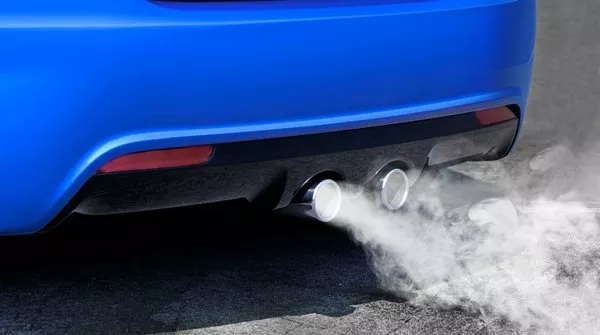
Even white smoke is a strong indication that your car needs fixing
To give you an idea, the ideal air to fuel ratio for gasoline engine cars is 14.7:1 – 14.7. On the other hand, the diesel air to fuel ratio is 14.5:1.
Other factors that affect the air to fuel ratio in the vehicle are faulty fuel pressure regulator, leaking fuel injector, faulty air/fuel ratio sensor, airflow sensor, faulty coolant sensor, and more.
A faulty fuel pressure regulator can cause an excessive amount of pressure running through your system. A leaking fuel injector can spray an excessive amount of fuel to your engine.
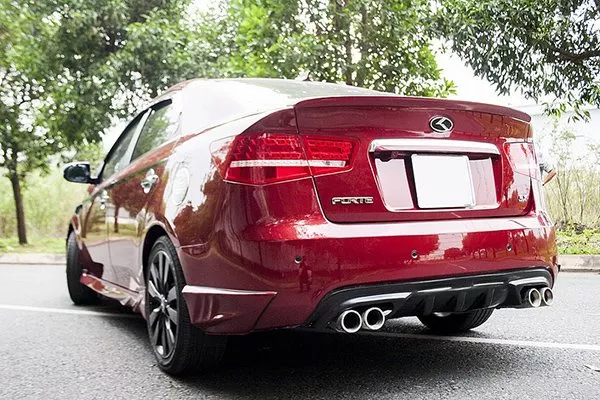
You can customize your exhaust pipe for a sharper appeal
A faulty air/fuel ratio sensor causes to spray fuel more than necessary. Again, spraying excessive fuel in your engine is the primary reason for smoke belching. A faulty coolant sensor can also cause your car to emit high volume of smoke as more fuel will be sprayed to a cylinder. Overall, various faulty engine components can cause smoke belching.
>>> Related: 6 ways to reduce your driving emissions
3. Smoke Belching: What does the law say about this?
The law that deals with smoke belching can be found in Republic Act No. 8749, or also known as the Philippine Clean Air Act. The Act is a comprehensive air quality management policy and program that aims to achieve and maintain healthy air in the country.
Smoke belching clearly violates the R.A. 8749 as it emits excessive harmful fuels that can disrupt the cleanliness of the air in the country.
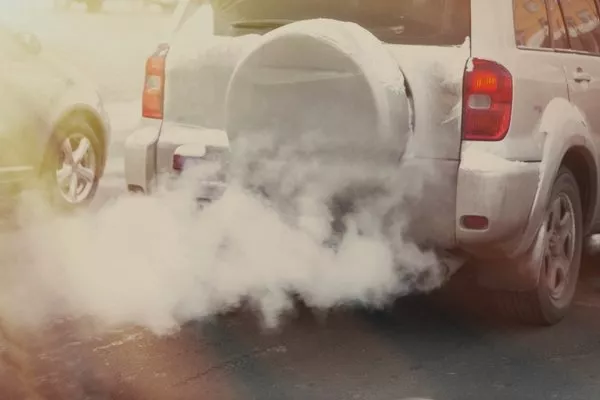
Any type of vehicular smoke must be avoided at all times
With this act, MMDA has launched an anti-smoke belching law program called the “Tanggal Bulok, Tanggal Usok” that aims to eliminate vehicles that emit black smoke on the road. The program is also made possible through the participation of the Land Transportation Office (LTO).
The program is manned by enforcers that will thoroughly check the vehicle’s exhaust system on the road by conducting a smoke test. In addition, the program is implemented to confirm a vehicle’s roadworthiness by inspecting parts such as tires, headlights, taillights, and more.
4. Smoke Belching: What are the penalties?
There will be enforcers that will conduct a smoke test on the road. These enforcers come with complete equipment and are also trained to provide proper justification that a certain car is indeed violating R.A. 8749.
The equipment comes with a sensor that is then put in a vehicle’s exhaust pipe for testing. The MMDA said that the average acceptable reading should be PM 2.5. Of note, black smoke doesn’t really matter that much. MMDA sees it as an indicator only but vehicles that emit black smoke can still pass the test.
![Watch out for MMDA's anti-smoke belching testing [Photo: Gadget Addict] MMDA setting up smoke testing](https://img.philkotse.com/temp/2024/07/27/smoke-belching-2-27ec-3951.webp)
Watch out for MMDA's anti-smoke belching testing [Photo: Gadget Addict]
The enforcers run through a series of tests with corresponding guidelines in order to have regulated testing. A receipt will be given for violators containing the test results, as well as flyers that contain the penalties and the next steps for smoke belching violators.
MMDA has the right to confiscate a vehicle’s license plate once it failed the smoke test. For the first offense, a Php 2,000 fine is given, while for the second offense, a Php 4,000 is given. Lastly, the third offense comes with a Php 6,000 fine and a one-year suspension of motor vehicle registration (MVR).
>>> Related: Complete list of LTO fines and penalties in the Philippines
5. Smoke Belching Solution: What can I do to fix this?
Since there are various reasons why smoke belching occurs, there are also several steps you can do to avoid it.
The first thing you can do is to visit an emission testing center. This way, you can evaluate if your car passes the exhaust emission standard.
The second tip is to perform regular maintenance as prescribed by your car’s manufacturer. Car parts like air filter, fuel injector, and other sensors that are faulty can disrupt the ideal air to fuel ratio, which then causes a smoke belch.
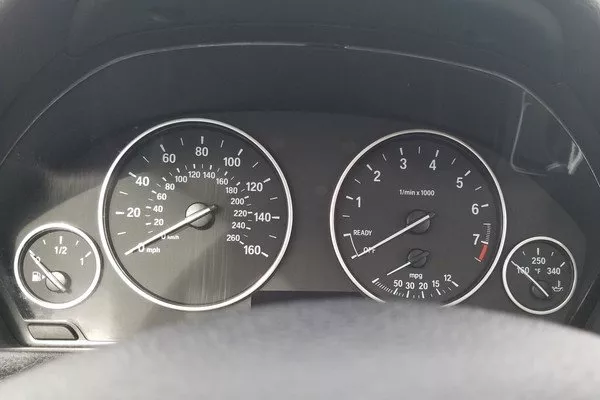
Always look at your gauges to run your car in an ideal manner
The last tip is to practice a better driving habit. If you are one of those drivers that ridiculously steps on the gas over a long period of time, then you should stop doing that inefficient habit. Aside from not yielding a good fuel economy rating, applying excessive pressure on the gas pedal can push your engine to the limit causing unwanted damage to different parts.
Avoiding smoke belching can not only prevent you from the hefty fines MMDA has imposed but it also helps the environment to have a better air quality. As such, keeping your car in tip-top shape also contributes to limiting the impact of global warming.
6. FAQs about Smoke Belching in the Philippines
Q: What is smoke belching?
Smoke belching is the black smoke vehicles emit when there are incompletely burnt fuels due to faulty components.
Q: Is smoke belching illegal in the Philippines?
Yes, smoke belching is illegal in the country. The Philippine Clean Air Act aims to achieve healthy air in the country. There are imposed fines for violators.
Q: My car emits black smoke, what should I do?
This means that your car is smoke belching, which is completely illegal in the country. You can do the regular maintenance routines of your car in order to avoid smoke belching.
Q: What causes smoke belching?
Various faulty vehicular components such as leaking fuel injector, clogged air filter, faulty sensors, and more.
Q: What are the smoke belching penalty in the Philippines?
First offense – Php 2,000; Second offense – Php 4,000; Third offense – Php 6,000 and a one-year suspension of motor vehicle registration or MVR.
Here at Philkotse.com, we value your interest in the automotive industry. Visit our website to find out more.
Recent posts
- philippine emission test centers guide Aug 26, 2021
- Why does my car consume more fuel than advertised? [Newbie Guide] Mar 01, 2021
- 6 FAQs about emission test in the Philippines Aug 16, 2022
- Modifying your car's exhaust systems: Which type to choose? Feb 08, 2021
- 8 easy tips to diagnose your car's exhaust problems Feb 08, 2021












